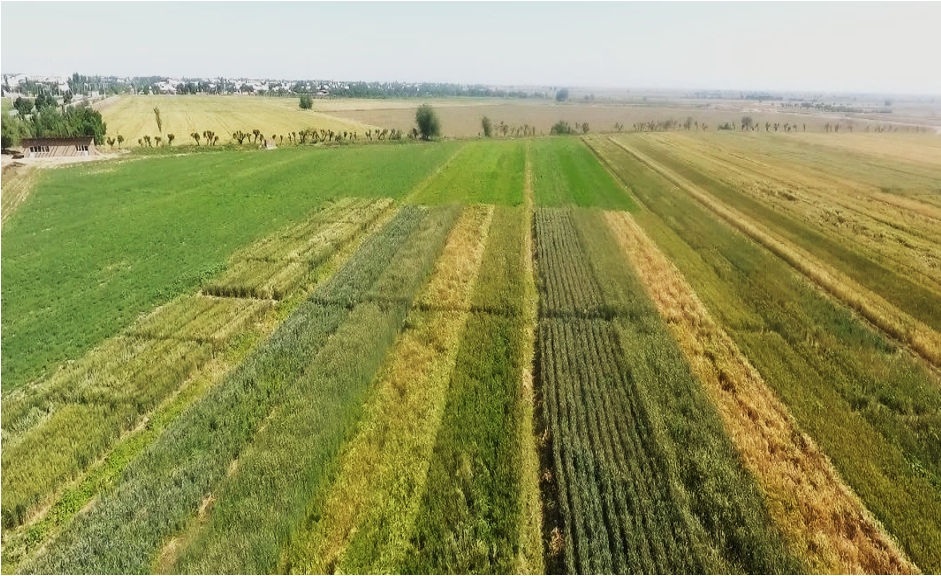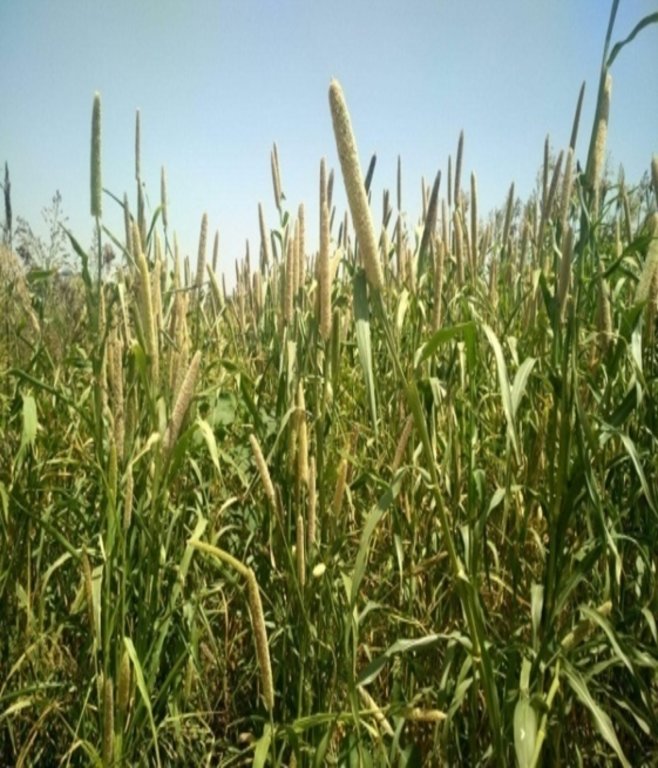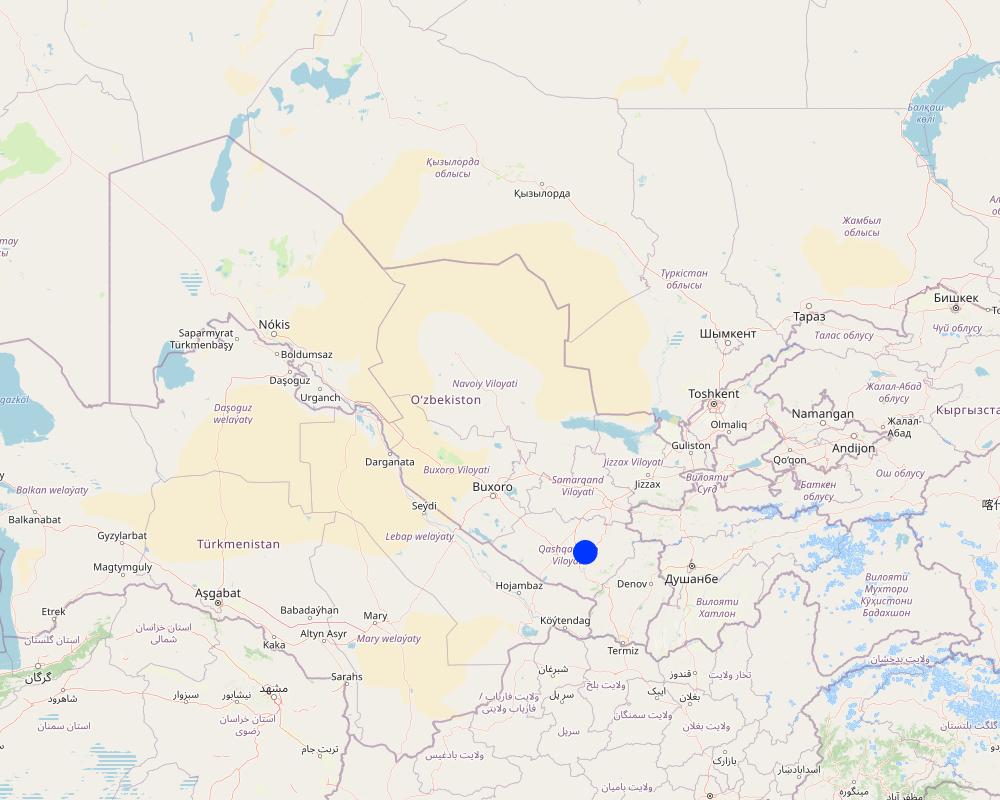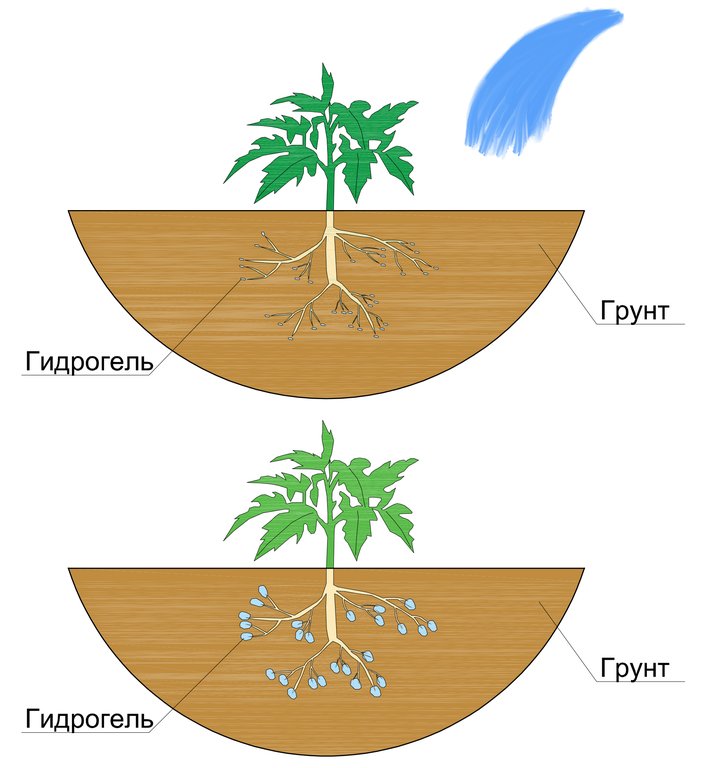Application of hydrogels for growing agricultural crops under low soil moisture conditions [Uzbekistan]. [Uzbekistan]
- Creation:
- Update:
- Compiler: Rustam Ibragimov
- Editor: Hayot Ibrakhimov
- Reviewers: Olga Andreeva, Rima Mekdaschi Studer
Application of hydrogels for growing agricultural crops under low soil moisture conditions
technologies_6192 - Uzbekistan
View sections
Expand all Collapse all1. General information
1.2 Contact details of resource persons and institutions involved in the assessment and documentation of the Technology
Key resource person(s)
SLM specialist:
Zhuraev Diyor Turdikulovich
Kashkadarya branch of the Research Institute of Grain and Leguminous Crops
Uzbekistan
Name of project which facilitated the documentation/ evaluation of the Technology (if relevant)
Integrated natural resources management in drought-prone and salt-affected agricultural production landscapes in Central Asia and Turkey ((CACILM-2))Name of the institution(s) which facilitated the documentation/ evaluation of the Technology (if relevant)
Design and Research UZGIP Institute, Ministry of Water Resources (UzGIP) - Uzbekistan1.3 Conditions regarding the use of data documented through WOCAT
The compiler and key resource person(s) accept the conditions regarding the use of data documented through WOCAT:
Yes
1.4 Declaration on sustainability of the described Technology
Is the Technology described here problematic with regard to land degradation, so that it cannot be declared a sustainable land management technology?
No
Comments:
The use of hydrogels in crop cultivation aims to enhance agricultural productivity while helping to prevent land degradation.
2. Description of the SLM Technology
2.1 Short description of the Technology
Definition of the Technology:
The technology of cultivating agricultural crops with the use of hydrogels ensures optimal soil moisture and plant nutrition by accumulating soil water and nutrients and gradually releasing them to the plants, thereby increasing crop yields and improving harvest quality.
2.2 Detailed description of the Technology
Description:
The use of hydrogel technology in crop production was demonstrated under the FAO/GEF (CACILM-2) project at the agricultural site of the Kashkadarya branch of the Grain and Legume Research Institute, located in Kamashi district of the Kashkadarya region.
In arid climates, soil moisture is the main limiting factor for crop cultivation. In irrigated zones, the lack of precipitation is compensated by artificial irrigation. However, rainfed farmland depends entirely on precipitation, which is distributed extremely unevenly throughout the year. Under such conditions, measures to improve crop water availability become increasingly important.
In global agriculture, one of the methods for conserving soil moisture is the use of hydrogels, which can retain water in amounts 300 to 1,000 times their own weight. Unlike most water-absorbing substances, hydrogels can gradually release the absorbed water and nutrients to plants. Thanks to these unique properties, the hydrogel functions as a water reservoir that maintains normal soil moisture. Although it cannot replace water, it enables the most efficient use of rainfall and existing soil moisture reserves.
Hydrogel is applied to the soil in dry form, evenly spread over the surface and then plowed in. In this case, the effect appears later, as the hydrogel needs to absorb water before it starts working. Once swollen, the hydrogel improves soil structure and its water-retention capacity. Hydrogel can also be applied after pre-hydration—up to a 100-fold increase in polymer mass (about one hour)—by spraying the mixture onto the soil. This method can be used immediately before plowing.
The use of hydrogels helps save irrigation water by reducing surface evaporation caused by the soil’s inability to retain moisture.
2.3 Photos of the Technology
2.5 Country/ region/ locations where the Technology has been applied and which are covered by this assessment
Country:
Uzbekistan
Region/ State/ Province:
Kashkadarya region
Further specification of location:
Kamashi District, agricultural site of the Kashkadarya branch of the Research Institute of Grain and Leguminous Crops
Specify the spread of the Technology:
- evenly spread over an area
If the Technology is evenly spread over an area, specify area covered (in km2):
1.93
If precise area is not known, indicate approximate area covered:
- 1-10 km2
Is/are the technology site(s) located in a permanently protected area?
No
Comments:
The description of the technology is based on materials provided by Doctor of Agricultural Sciences D. Juraev, project executor for GCP/SEC/293/GFF, implemented at the Kashkadarya branch of the Research Institute within the framework of the FAO/GEF project “Integrated Natural Resources Management in Drought-Prone and Salt-Affected Agricultural Production Landscapes in Central Asia and Turkey (CACILM2).
Map
×2.6 Date of implementation
Indicate year of implementation:
2011
If precise year is not known, indicate approximate date:
- 10-50 years ago
2.7 Introduction of the Technology
Specify how the Technology was introduced:
- through projects/ external interventions
Comments (type of project, etc.):
The technology is being implemented within the framework of the FAO/GEF Project ('CACILM2'). The implementation of the technology is facilitated by donor projects
3. Classification of the SLM Technology
3.1 Main purpose(s) of the Technology
- improve production
- adapt to climate change/ extremes and its impacts
- reduction of evaporation from the surface, efficient use of precipitation and available soil moisture reserves, saving of irrigation water
3.2 Current land use type(s) where the Technology is applied
Land use mixed within the same land unit:
No
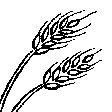
Cropland
- Annual cropping
3.3 Has land use changed due to the implementation of the Technology?

Cropland
3.4 Water supply
Water supply for the land on which the Technology is applied:
- rainfed
3.5 SLM group to which the Technology belongs
- improved ground/ vegetation cover
3.6 SLM measures comprising the Technology
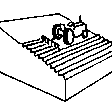
agronomic measures
- A7: Others
4. Technical specifications, implementation activities, inputs, and costs
4.1 Technical drawing of the Technology
Technical specifications (related to technical drawing):
The hydrogel absorbs and stores moisture in volumes hundreds of times greater than its own, retains it, and slowly releases it to the plant, resulting in a conserving effect and efficient water use by the plants.
4.2 General information regarding the calculation of inputs and costs
Specify how costs and inputs were calculated:
- per Technology area
Indicate size and area unit:
193 ha
Specify currency used for cost calculations:
- USD
Indicate average wage cost of hired labour per day:
Around 10 US dollars
4.3 Establishment activities
| Activity | Timing (season) | |
|---|---|---|
| 1. | Soil preparation: plowing, harrowing, coarse leveling | Autumn-spring |
| 2. | Planting/sowing | Spring (March-April) |
| 3. | Crop care and plant protection | March - September |
4.4 Costs and inputs needed for establishment
| Specify input | Unit | Quantity | Costs per Unit | Total costs per input | % of costs borne by land users | |
|---|---|---|---|---|---|---|
| Labour | Workers' labor | ha | 193.0 | 99.0 | 19107.0 | |
| Equipment | Preparing the land, sowing | ha | 193.0 | 26.4 | 5095.2 | |
| Plant material | Seeds + manure | ha | 193.0 | 27.9 | 5384.7 | |
| Total costs for establishment of the Technology | 29586.9 | |||||
| Total costs for establishment of the Technology in USD | 29586.9 | |||||
If land user bore less than 100% of costs, indicate who covered the remaining costs:
The costs were covered from the institute/project budget.
4.5 Maintenance/ recurrent activities
| Activity | Timing/ frequency | |
|---|---|---|
| 1. | Soil preparation: plowing, harrowing, coarce leveling | Autumn-spring |
| 2. | Planting/sowing | Spring (March-April) |
| 3. | Crop care and plant protection | March - September |
Comments:
Hydrogel application, an annual event
4.6 Costs and inputs needed for maintenance/ recurrent activities (per year)
Comments:
No additional investment is required to maintain the technology, as it is an annual activity. However, actions are needed for farmer training, information dissemination, and related activities.
4.7 Most important factors affecting the costs
Describe the most determinate factors affecting the costs:
The highest costs for implementing the technology are associated with soil preparation and sowing/planting, which include labor and fuel and lubricants.
5. Natural and human environment
5.1 Climate
Annual rainfall
- < 250 mm
- 251-500 mm
- 501-750 mm
- 751-1,000 mm
- 1,001-1,500 mm
- 1,501-2,000 mm
- 2,001-3,000 mm
- 3,001-4,000 mm
- > 4,000 mm
Specify average annual rainfall (if known), in mm:
225.00
Specifications/ comments on rainfall:
80-90% of precipitation falls in December-May
Indicate the name of the reference meteorological station considered:
Kamashi, Karshi
Agro-climatic zone
- semi-arid
The growing season is limited by soil drying due to scarce rainfall in the summer months and averages 90 days.
5.2 Topography
Slopes on average:
- flat (0-2%)
- gentle (3-5%)
- moderate (6-10%)
- rolling (11-15%)
- hilly (16-30%)
- steep (31-60%)
- very steep (>60%)
Landforms:
- plateau/plains
- ridges
- mountain slopes
- hill slopes
- footslopes
- valley floors
Altitudinal zone:
- 0-100 m a.s.l.
- 101-500 m a.s.l.
- 501-1,000 m a.s.l.
- 1,001-1,500 m a.s.l.
- 1,501-2,000 m a.s.l.
- 2,001-2,500 m a.s.l.
- 2,501-3,000 m a.s.l.
- 3,001-4,000 m a.s.l.
- > 4,000 m a.s.l.
Indicate if the Technology is specifically applied in:
- not relevant
5.3 Soils
Soil depth on average:
- very shallow (0-20 cm)
- shallow (21-50 cm)
- moderately deep (51-80 cm)
- deep (81-120 cm)
- very deep (> 120 cm)
Soil texture (topsoil):
- medium (loamy, silty)
Soil texture (> 20 cm below surface):
- medium (loamy, silty)
Topsoil organic matter:
- low (<1%)
5.4 Water availability and quality
Ground water table:
> 50 m
Availability of surface water:
medium
Water quality (untreated):
good drinking water
Water quality refers to:
surface water
Is water salinity a problem?
No
Is flooding of the area occurring?
No
Comments and further specifications on water quality and quantity:
The rainfed zone is located in the upper reaches of the river basin, where surface water sources are free from anthropogenic pressure and are not polluted by human activities.
5.5 Biodiversity
Species diversity:
- medium
Habitat diversity:
- medium
Comments and further specifications on biodiversity:
The cultivated vegetation in rainfed areas is represented by a limited variety of drought-tolerant crops, including oilseeds (sunflower, safflower), melons, and winter wheat.
5.6 Characteristics of land users applying the Technology
Sedentary or nomadic:
- Sedentary
Market orientation of production system:
- mixed (subsistence/ commercial)
Off-farm income:
- > 50% of all income
Relative level of wealth:
- average
Individuals or groups:
- individual/ household
Level of mechanization:
- mechanized/ motorized
Age of land users:
- middle-aged
5.7 Average area of land used by land users applying the Technology
- < 0.5 ha
- 0.5-1 ha
- 1-2 ha
- 2-5 ha
- 5-15 ha
- 15-50 ha
- 50-100 ha
- 100-500 ha
- 500-1,000 ha
- 1,000-10,000 ha
- > 10,000 ha
Is this considered small-, medium- or large-scale (referring to local context)?
- medium-scale
Comments:
The average size of farms in irrigated areas is 35–75 ha, while in non-irrigated pasture areas it is 100–200 ha.
5.8 Land ownership, land use rights, and water use rights
Land ownership:
- state
Land use rights:
- leased
- Through water user associations and irrigation system management authorities
Are land use rights based on a traditional legal system?
Yes
5.9 Access to services and infrastructure
health:
- poor
- moderate
- good
education:
- poor
- moderate
- good
technical assistance:
- poor
- moderate
- good
employment (e.g. off-farm):
- poor
- moderate
- good
markets:
- poor
- moderate
- good
energy:
- poor
- moderate
- good
roads and transport:
- poor
- moderate
- good
drinking water and sanitation:
- poor
- moderate
- good
financial services:
- poor
- moderate
- good
6. Impacts and concluding statements
6.1 On-site impacts the Technology has shown
Socio-economic impacts
Production
crop production
Income and costs
farm income
Ecological impacts
Water cycle/ runoff
harvesting/ collection of water
Biodiversity: vegetation, animals
Vegetation cover
Climate and disaster risk reduction
drought impacts
micro-climate
6.2 Off-site impacts the Technology has shown
impact of greenhouse gases
Specify assessment of off-site impacts (measurements):
The technology has no negative impact on the environment, either within or beyond the area of its application.
6.3 Exposure and sensitivity of the Technology to gradual climate change and climate-related extremes/ disasters (as perceived by land users)
Gradual climate change
Gradual climate change
| Season | increase or decrease | How does the Technology cope with it? | |
|---|---|---|---|
| annual temperature | increase | moderately | |
| seasonal temperature | summer | increase | moderately |
| annual rainfall | decrease | well | |
| seasonal rainfall | spring | decrease | well |
| seasonal rainfall | summer | decrease | well |
Climate-related extremes (disasters)
Climatological disasters
| How does the Technology cope with it? | |
|---|---|
| heatwave | moderately |
| drought | well |
Other climate-related consequences
Other climate-related consequences
| How does the Technology cope with it? | |
|---|---|
| extended growing period | well |
Comments:
The use of hydrogels is one of the adaptation measures to climate change, particularly for adapting to increasing aridity.
6.4 Cost-benefit analysis
How do the benefits compare with the establishment costs (from land users’ perspective)?
Short-term returns:
positive
Long-term returns:
positive
How do the benefits compare with the maintenance/ recurrent costs (from land users' perspective)?
Short-term returns:
positive
Long-term returns:
positive
Comments:
The technology is low-cost, so the results achieved are positive compared to the investment, even in the short term.
6.5 Adoption of the Technology
- single cases/ experimental
6.6 Adaptation
Has the Technology been modified recently to adapt to changing conditions?
No
6.7 Strengths/ advantages/ opportunities of the Technology
| Strengths/ advantages/ opportunities in the land user’s view |
|---|
| Moisture-retaining properties and the ability to release water slowly to plants |
| Provides an opportunity to increase crop yields in rainfed areas under low moisture conditions |
| Strengths/ advantages/ opportunities in the compiler’s or other key resource person’s view |
|---|
| Enhanced moisture absorption (granules absorb up to 300 times their own weight), allowing the required moisture level for plants to be maintained for an extended period. |
| Efficient material use (only 1–1.6 g of dry granules is needed to produce 1 liter of base). |
| Earlier seed germination compared to traditional cultivation. |
| Preservation of all microelements present in the substrate (they are not washed out); |
| Higher crop yields |
| Reduced soil compaction promotes better root system development. |
| Increases air circulation, enhances bacterial life in the soil, promotes the growth of the worm population, which is especially important when soils are depleted. |
| The water retention capacity of hydrogels is high enough to prevent moisture loss through evaporation, but not too high that roots cannot extract water from them, providing an optimal environment for plant growth |
| Hydrogels can be infused with nutrients, and even herbicides can be incorporated into the polymer and gradually released into the soil. |
6.8 Weaknesses/ disadvantages/ risks of the Technology and ways of overcoming them
| Weaknesses/ disadvantages/ risks in the land user’s view | How can they be overcome? |
|---|---|
| A relatively new practice, with limited comprehensive information available on both its benefits and potential risks. There is not much research on the possible negative effects of applying hydrogels to soil over long periods. | Dissemination of information, involvement of media and other sources |
| Weaknesses/ disadvantages/ risks in the compiler’s or other key resource person’s view | How can they be overcome? |
|---|---|
|
An in-depth review reveals some potential risks to humans and animals from the use of hydrogels: 'Some soil-applied hydrogels release sodium as they degrade, which can eventually lead to soil salinization. The newly used hydrogels do not have a fully established profile, and as with many experimental products, potential issues have not yet been thoroughly investigated. |
Hydrogels should be selected carefully. Before use, all properties and potential risks must be thoroughly examined. The use of poorly studied and potentially hazardous hydrogels should be avoided. |
| Physical swelling of hydrogel crystals can clog or block the intestinal tracts of animals and insects if ingested. | When using hydrogels, it is essential to follow application guidelines and observe all recommended safety precautions. |
7. References and links
7.1 Methods/ sources of information
- interviews with SLM specialists/ experts
- compilation from reports and other existing documentation
7.2 References to available publications
Title, author, year, ISBN:
1.A.I.Nurbekov. CULTIVATION OF AGRICULTURAL CROPS UNDER CONSERVATION AGRICULTURE IN IRRIGATED CONDITIONS CENTRAL ASIA. Tashkent, Uzbekistan. -2019. –P. 173
Title, author, year, ISBN:
2.Х.М.Талипов. Қашқадарё вилояти Қамаши туманининг тоғ ва тоғ олди ҳудудларидаги лалмикор қурғоқчил ерларда агроўрмончиликни ривожлантириш бўйича тавсиялар. Baktria press –Тошкент. 2020. –Б. 50
Title, author, year, ISBN:
3.О.А.Аманов, А.И.Нурбеков, Д.Т.Жўраев, Н.Ғ.Ёдгоров, О.С.Амирқулов ва А.Шоймурадов. Қишлоқ хўжалик ландшафтларида қурғоқчил ва шўрланган майдонлар табиий ресурсларни комплекс бошқариш технологияси бўйича тавсиялар. Насаф нашриёти. –Қарши. 2020. –Б. 60.
7.3 Links to relevant online information
Title/ description:
Nurbekov, A., Akramkhanov, A., Lamers, J., Kassam, A., Friedrich, T., Gupta, R., ... & Bekenov, M. (2013). conservation agriculture in central Asia. Conservation Agriculture: Global Prospects and Challenges, Wallingford: CABI, 223-247.
Title/ description:
Nurbekov, A., Akramkhanov, A., Kassam, A., Sydyk, D., Ziyadaullaev, Z., & Lamers, J. P. A. (2016). Conservation Agriculture for combating land degradation in Central Asia: a synthesis. AIMS Agriculture and Food, 1(2), 144-156.
Title/ description:
Nurbekov, A. (2015). Conservation agriculture in irrigated areas of Azerbaijan, Kazakhstan and Uzbekistan. Amman, Jordan: International Center for Agricultural Research in the Dry Areas (ICARDA).
Title/ description:
Acreman, M., Albertengo, J., Amado, T., Amis, M., Anderson, A., Bacchur, I., ... & Yakushina, E. (2012). Report of the work of the expert group on maintaining the ability of biodiversity to continue to support the water cycle.
Title/ description:
Nurbekov, A., Jamoliddinov, A., Joldoshev, K., Rischkowskv, B., Nishanov, N., Rai, K. N., ... & Rao, A. S. (2013). Potential of pearl millet as a forage crop in wheat-based double cropping system in Central Asia. Journal of SAT Agricultural Research, 11, 1-5.
Title/ description:
Nurbekov, A., Aksoy, U., Muminjanov, H., Khujabekov, A., Nurbekova, R., & Shukurov, A. (2018, August). Organic agriculture in Uzbekistan. In XXX International Horticultural Congress IHC2018: II International Symposium on Organic Horticulture for Wellbeing of the 1286 (pp. 11-16).
Title/ description:
Israilovich, N. A., Sydyk, D., Chorsham, U., & Ibragimovna, R. D. (2020). EFFECT OF PLANTING DATE ON PRODUCTIVITY OF MAIZE (ZEA MAYS L. SSP.) IN SOUTHERN KAZAKHSTAN. European science review, (9-10), 12-17.
Title/ description:
Nurbekov, A. (2015). News coverage of the Field day in Karao'zak district in local TV. Amman, Jordan: International Center for Agricultural Research in the Dry Areas (ICARDA)(Executive Producer).
Links and modules
Expand all Collapse allLinks
No links
Modules
No modules


